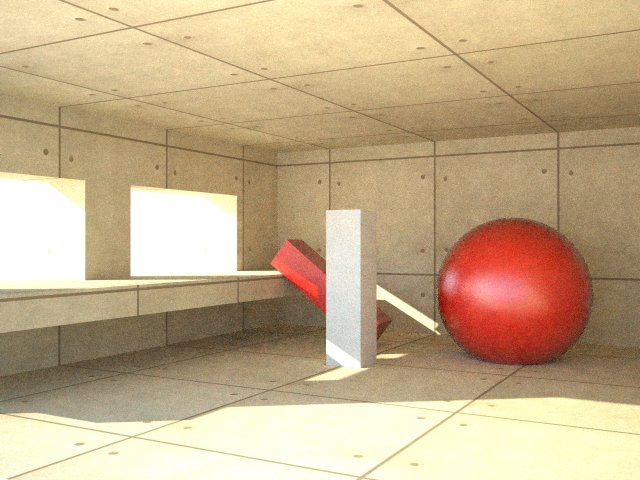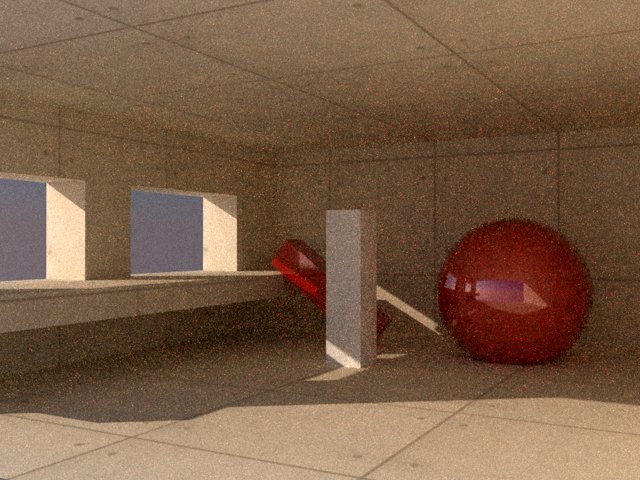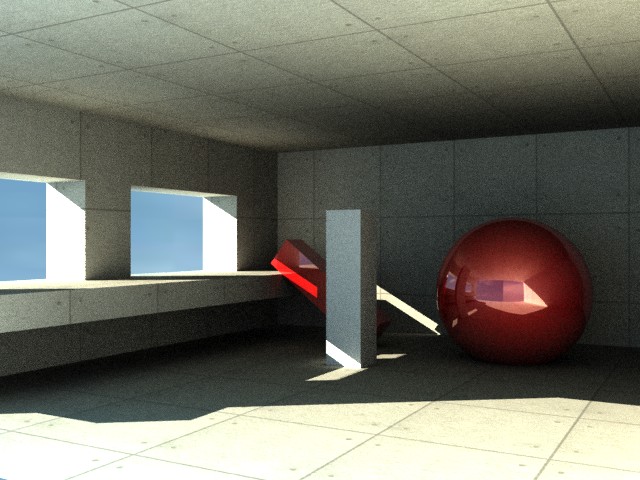But I found the results quite interesting. Each renderer behaves very differently when managing light. Actually all the renderings below satisfy me. Each renderer has different strengths and weaknesses... I used a very simple scene, only lit wih one sunlight, availible here.
To who is interested in exploring this too, I should add that all those renderers are free (only luxrender and yafray are open source), multi-platform (kerkythea has no linux 64bit version but the 32bit runs fine on 64bit systems, indigo has a linux version but I used win version with wine), and have an exporter for blender.

Not bad, when you think blender has only one of the most basic GI type availible: Ambient Occlusion. You can see, of course, that the light scattering is far from perfect. In fact, the light doesn't bounce at all. But neverthless, the general impression you get from the image is very good.
Shadows are easy to configure, and you have the big advantage to be able to render the same scene in less than 02 minutes without oversampling.
Resuming, for me this is still the most versatile solution. The speed of using an internal renderer (no export operation) is really unbeatable.

Yes you read well, 40 seconds. And look at the red reflect under the red box, this is true GI. This renderer is just amazing. Adjusting the final tone, contrast, exposure is a piece of cake, the materials get fairly well respected when exported from blender.
Non-UV-mapped textures are applied correctly, but multi-texture materials only keep the first one. So you need a bit of work on your materials.
For some strange reason, my sunlight were slightly moved? No big deal, though...
Kerkythea has a lot of settings, so it is hard to configure well. But so fast...

Indigo is an unbiased renderer, which means you don't need to configure any light. The price of this is a very high rendering time. It starts from a very grainy render and refines progressively. You stop when you find it is enough.
Simply export from blender, and you get this. I just had to choose "physical sky + sun" preset. I found that pale lighting very cool. The red material got a bit different too.
Only UV-mapped textures are used, which is a bit annoying in architecture.
But the immediate lighting quality is quite stunning, with total zero configuration...

Luxrender is an unbiased raytracer, like indigo. Same system, same render times...
Luxrender is still a baby, it gave me a couple of errors and artifacts. But don't you think the light is just marvelous?
As with indigo, only UV-mapped textures are used. The reflexive red material also didn't behave very correctly
But since those renderers let you see from the first seconds a completely lighted image, you can do adjustments quite fast.
Other thing, luxrender is open-source, so it has a chance to develop very fast...

The good old yafray (this is still old yafray, not yafaray) is still a good player in the game. There is the enormous facility of having it integrated in blender. Basically there is no need to touch the or tweak anything, only a couple of render settings.
And since it is a very simple raytracer, not physically exact or anything, it is easy to tweak and to get the sharp, dark shadows that I like...
This is by far the easiest external renderer to use... And I found the result excellent, compared to others.
- Blender internal renderer is still the most flexible solution. Can do very fast rendering and also quite slower, hi-quality rendering, without touching anything in your scene. So you earn a lot of time while working.
- Kerkythea is by far the most complex renderer of this list. The options availible are impressive, and the material editor is even more complex than the blender one. So the possibilities are huge. It is also incredibly fast. But it is of course harder to learn, and you must rework a bit your scene after exporting. But I think it can give you very professional results in an incredibly short rendering time.
- Indigo was much easier to use than I had expected. Basically, you just need to UV-map all textures, export, and that's it. Nothing to tweak. And the lighting is just stunning. But be prepared to extremely long rendering time.
- Luxrender behaves almost exactly the same way as indigo. But it is still young, so it gave me many errors. But since it is opensource, it has a lot of advantages over indigo (more versions, quick development) so, let's keep an eye fixed on it.
- Yafray is still a very good solution, reasonably fast, and it has the enormous advantage of being well integrated in blender, so your scene can go "as it is", without any modification (all materials are supported, etc...)